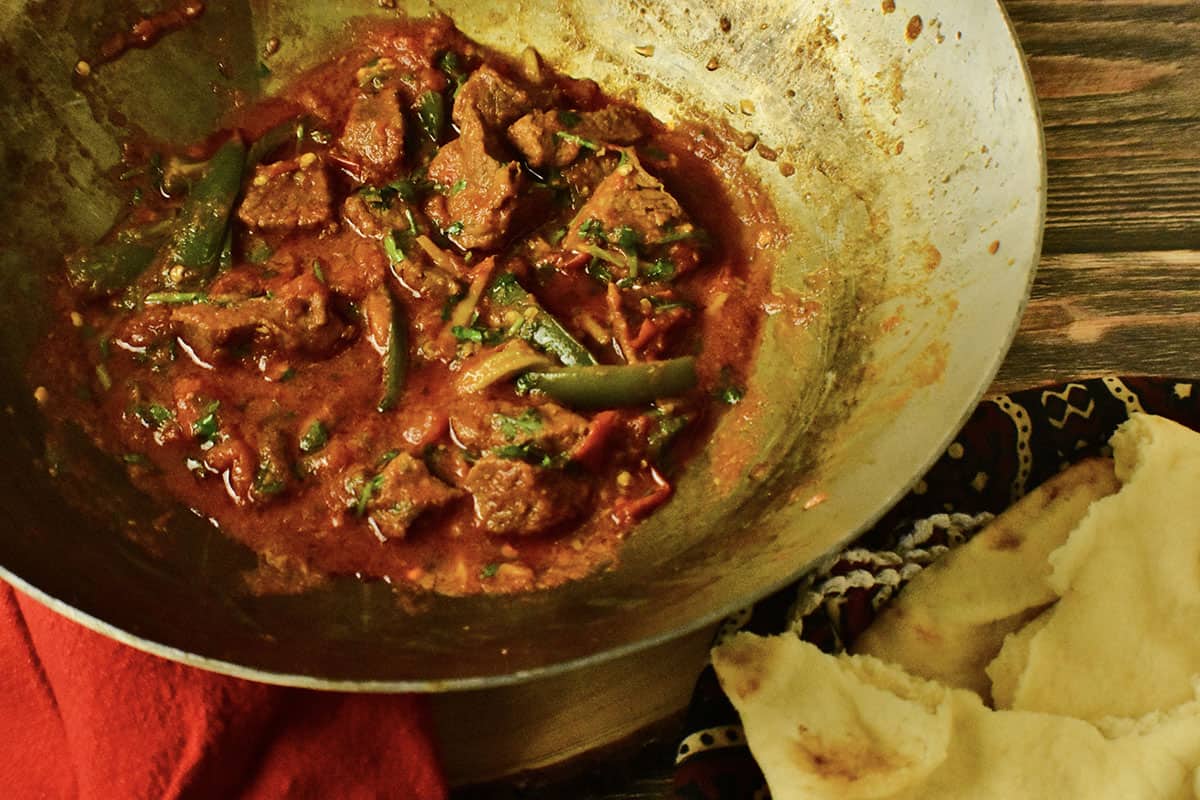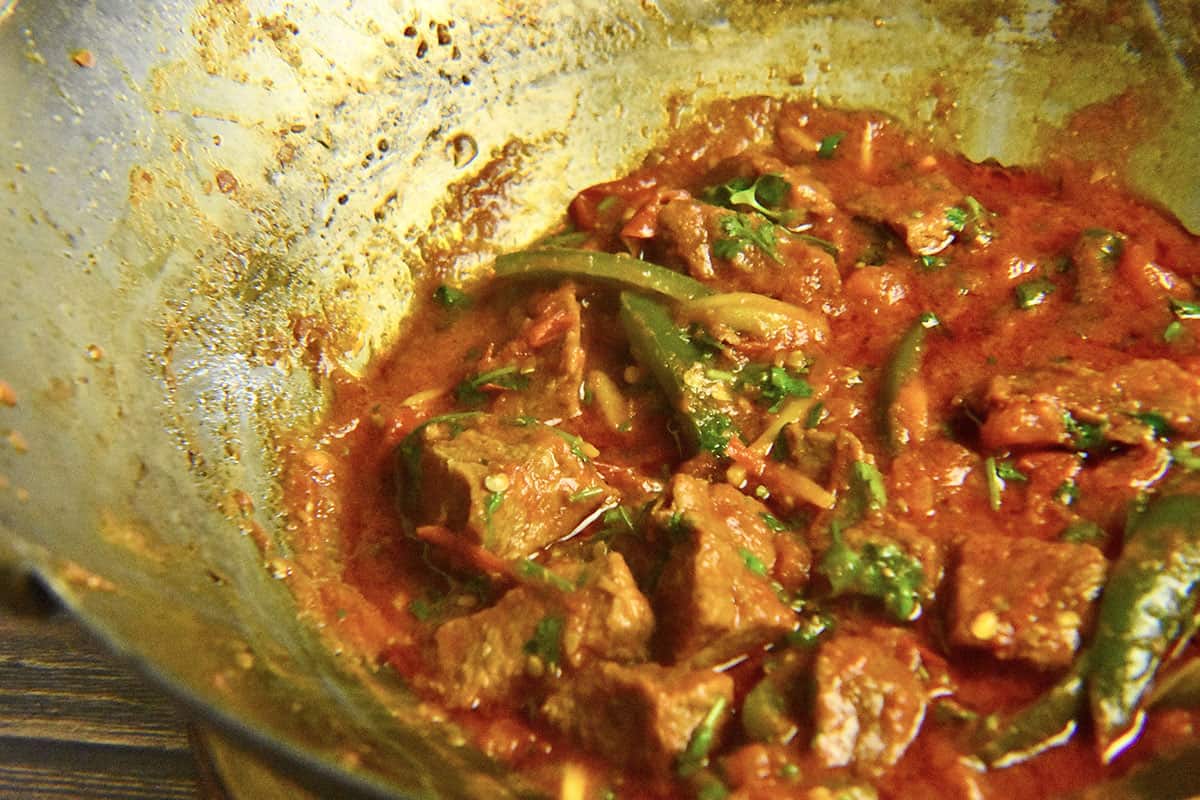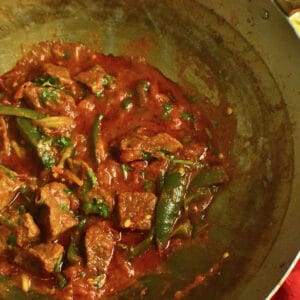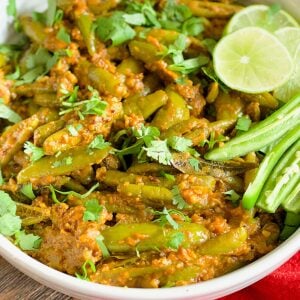
The History
Before we get on with this delicious beef karahi gosht recipe, let's touch briefly on its origins. Named for the utensil it's cooked in, a 'karahi', the beef or 'gosht' is the Pakistani version of a stir fry. As discussed in my post on best-karahi-chicken-recipe, the karahi or wok allows for quicker and more efficient cooking due to its shape and the resulting heat distribution.
Karahi 'gosht' means stir-fried meat, be it chicken, beef, mutton, or lamb, but as a general rule, Pakistanis prefer goat meat or chicken. As per an article by one of my favorite Pakistani food writers Bisma Tirmizi in Dawn.com most meat karahi recipes have originated in what is popularly known as the North West Frontier Province of Pakistan.
The 'Pathan's', as the natives of this region are called, love meat, and many famous meat recipes have originated from here.
My Story
My story? Just that I've always loved Karahi, be it Chicken, mutton, beef, or Shrimp. Unlike most Pakistani curries, there are few spices in this recipe. The trick is to have excellent quality meat that is very well cooked and tenderized. With lots of tomatoes and a few other fresh and fragrant ingredients, this is a unique dish.
A popular street food in Pakistan, eaten with hot fresh Naan off the tandoor, just thinking about it makes my mouth water. My home-cooked version is not exactly the real thing but I like to think it comes close. Since I love and miss Karahi so much I have created a few different recipes for it and it is a regular feature at my table.
The Recipe
The Meat
The first trick to a good karahi is to get good quality meat. Typically, bone-in meat like a goat is preferred as the bones give extra flavor to the dish. However, I use stew beef as my kids prefer boneless meat. I source all my meat from a local supplier and the quality is top-notch, extra lean, and very tender. In fact, if I overcook it a little it starts shredding, so I have to cook it just right!
You can also get a good lean cut like a tenderloin from your local grocer and cut it into cubes. Another good boneless alternative is veal which is very tender.
The Tomatoes
The next most important ingredient is the tomatoes. Ripe but firm is what you're looking for. I use large beef steak tomatoes as opposed to my usual Roma tomatoes.
Roma tomatoes are good for curries and sauces as they are easy to make a paste with. Beef steak tomatoes are firmer so you get some texture to the final karahi. Being a stir fry you want all the ingredients to work together to flavor the dish but you want each one visible. The tomatoes are cooked through but some pieces can be seen coating the meat.
The Thai Chilies
The karahi is as much about presentation as it is about taste, so I like to use Thai chilies as the red color is so vibrant it really adds a beautiful finish to the dish. Since the chilies are whole you can eat them if you want extra heat or pass if you don't. This is a super easy way to satisfy different taste buds! My husband loves spices and my kids like slightly milder food, so this leaves everyone happy!
The Ginger
Cutting the ginger into thin slivers is essential for both presentation and flavor. Sliced thin they cook quickly and flavor the meat well, yet biting into thin slivers is not overpowering. Since ginger can be a bit pungent it has to be prepped and cooked just right in recipes.
The Cilantro
The final touch, the cilantro is so fragrant that it's a perfect way to finish the dish. Slightly bland in taste it balances the sharp tangy taste of the tomatoes and the sharp pungent taste of the ginger.

Tips
- I used a cast iron skillet versus a karahi here - As mentioned in my best-karahi-chicken-recipe recipe this also heats well, like a karahi or wok, and is especially good for use in this recipe as it has a lid. Since beef is tougher than chicken and the cooking time in this recipe is longer, a skillet with a lid works better than the wider, open karahi.
- Firmer beef steak tomatoes are the preferred choice here - If you can't find any and use Roma then double the quantity as this recipe calls for lots of tomatoes. Since Roma tomatoes are softer, I would add them to the pot later. Add the tomatoes at the point that you uncover the pot to dry the liquid and they will be cooked by the time the liquid evaporates.
- Thai chilies - are pretty and often come in a red color which adds a pretty finish to the meat. Since we leave them whole and add them only at the end they don't really make the karahi too spicy unless you actually eat one. This is great as mentioned above, because you can accommodate different spice tolerance levels this way.
- After about 30 minutes check the meat - by inserting a knife. You want it cooked through but a bit firm as it will continue to cook while the liquid dries. If the meat is too soft it will start shredding when you saute it with the chillies and ginger. You want tender but whole pieces of meat.
Beef Karahi Gosht Recipe
Ingredients
- 2 lb stew beef
- ¼ cup cooking oil
- 2 tsp garlic
- 2 cups water
- 1 tsp salt
- 2 tsp red chili powder
- ¼ tsp turmeric powder
- 20 whole thai chilies
- 4 whole tomatoes see notes
- 1 inch ginger
- 1 bunch cilantro
Instructions
- Wash thai chillies and leave them whole with stems attached (see notes)
- roughly chop tomatoes
- peel ginger, and cut into thin slivers
- heat cooking oil
- saute garlic for 30 seconds
- saute beef till no longer red
- add 2 cups of water, tomatoes, salt, red chili powder and turmeric powder
- cook for 30-45 minutes till meat is cooked through (see notes)
- uncover and dry all liquid
- add the thai red chilies and ginger and saute for 1-2 minutes till the oil seperates from any residual liquid
- turn stove off, add chopped cilantro, stir and serve
Video








Joe
I'd like to make this. What does the  mean in ¼? Is that supposed to be a 1? Thanks.
untoldrecipesbynosheen
Hi Joe. The A is an error. I recently made some website changes and somehow these A's have been cropping up in random places. My apologies. I've fixed it and the quantity is 1/4 tsp. I hope you do decide to try the recipe. please don't hesitate to ask me any other questions.